Qi Sun
GeneVA: A Dataset of Human Annotations for Generative Text to Video Artifacts
Sep 10, 2025Abstract:Recent advances in probabilistic generative models have extended capabilities from static image synthesis to text-driven video generation. However, the inherent randomness of their generation process can lead to unpredictable artifacts, such as impossible physics and temporal inconsistency. Progress in addressing these challenges requires systematic benchmarks, yet existing datasets primarily focus on generative images due to the unique spatio-temporal complexities of videos. To bridge this gap, we introduce GeneVA, a large-scale artifact dataset with rich human annotations that focuses on spatio-temporal artifacts in videos generated from natural text prompts. We hope GeneVA can enable and assist critical applications, such as benchmarking model performance and improving generative video quality.
Cost-Aware Routing for Efficient Text-To-Image Generation
Jun 17, 2025



Abstract:Diffusion models are well known for their ability to generate a high-fidelity image for an input prompt through an iterative denoising process. Unfortunately, the high fidelity also comes at a high computational cost due the inherently sequential generative process. In this work, we seek to optimally balance quality and computational cost, and propose a framework to allow the amount of computation to vary for each prompt, depending on its complexity. Each prompt is automatically routed to the most appropriate text-to-image generation function, which may correspond to a distinct number of denoising steps of a diffusion model, or a disparate, independent text-to-image model. Unlike uniform cost reduction techniques (e.g., distillation, model quantization), our approach achieves the optimal trade-off by learning to reserve expensive choices (e.g., 100+ denoising steps) only for a few complex prompts, and employ more economical choices (e.g., small distilled model) for less sophisticated prompts. We empirically demonstrate on COCO and DiffusionDB that by learning to route to nine already-trained text-to-image models, our approach is able to deliver an average quality that is higher than that achievable by any of these models alone.
From Grounding to Manipulation: Case Studies of Foundation Model Integration in Embodied Robotic Systems
May 21, 2025Abstract:Foundation models (FMs) are increasingly used to bridge language and action in embodied agents, yet the operational characteristics of different FM integration strategies remain under-explored -- particularly for complex instruction following and versatile action generation in changing environments. This paper examines three paradigms for building robotic systems: end-to-end vision-language-action (VLA) models that implicitly integrate perception and planning, and modular pipelines incorporating either vision-language models (VLMs) or multimodal large language models (LLMs). We evaluate these paradigms through two focused case studies: a complex instruction grounding task assessing fine-grained instruction understanding and cross-modal disambiguation, and an object manipulation task targeting skill transfer via VLA finetuning. Our experiments in zero-shot and few-shot settings reveal trade-offs in generalization and data efficiency. By exploring performance limits, we distill design implications for developing language-driven physical agents and outline emerging challenges and opportunities for FM-powered robotics in real-world conditions.
Advancing Sequential Numerical Prediction in Autoregressive Models
May 19, 2025Abstract:Autoregressive models have become the de facto choice for sequence generation tasks, but standard approaches treat digits as independent tokens and apply cross-entropy loss, overlooking the coherent structure of numerical sequences. This paper introduces Numerical Token Integrity Loss (NTIL) to address this gap. NTIL operates at two levels: (1) token-level, where it extends the Earth Mover's Distance (EMD) to preserve ordinal relationships between numerical values, and (2) sequence-level, where it penalizes the overall discrepancy between the predicted and actual sequences. This dual approach improves numerical prediction and integrates effectively with LLMs/MLLMs. Extensive experiments show significant performance improvements with NTIL.
NORA: A Small Open-Sourced Generalist Vision Language Action Model for Embodied Tasks
Apr 28, 2025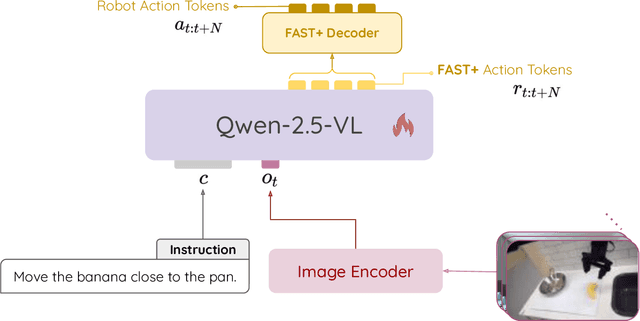
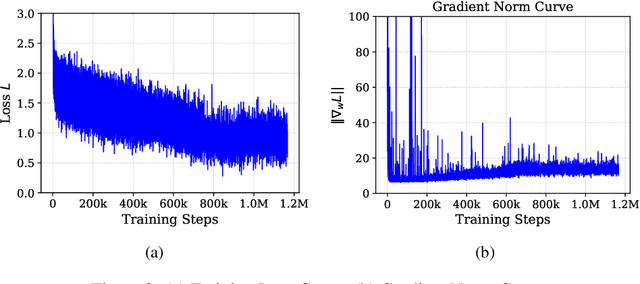

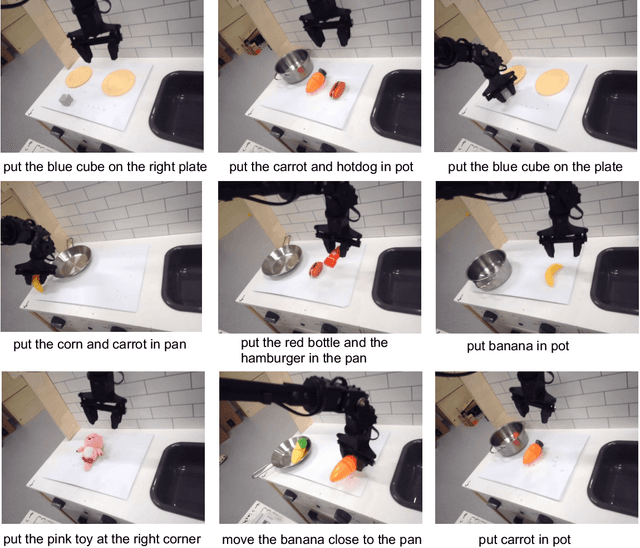
Abstract:Existing Visual-Language-Action (VLA) models have shown promising performance in zero-shot scenarios, demonstrating impressive task execution and reasoning capabilities. However, a significant challenge arises from the limitations of visual encoding, which can result in failures during tasks such as object grasping. Moreover, these models typically suffer from high computational overhead due to their large sizes, often exceeding 7B parameters. While these models excel in reasoning and task planning, the substantial computational overhead they incur makes them impractical for real-time robotic environments, where speed and efficiency are paramount. To address the limitations of existing VLA models, we propose NORA, a 3B-parameter model designed to reduce computational overhead while maintaining strong task performance. NORA adopts the Qwen-2.5-VL-3B multimodal model as its backbone, leveraging its superior visual-semantic understanding to enhance visual reasoning and action grounding. Additionally, our \model{} is trained on 970k real-world robot demonstrations and equipped with the FAST+ tokenizer for efficient action sequence generation. Experimental results demonstrate that NORA outperforms existing large-scale VLA models, achieving better task performance with significantly reduced computational overhead, making it a more practical solution for real-time robotic autonomy.
Nano-3D: Metasurface-Based Neural Depth Imaging
Mar 20, 2025



Abstract:Depth imaging is a foundational building block for broad applications, such as autonomous driving and virtual/augmented reality. Traditionally, depth cameras have relied on time-of-flight sensors or multi-lens systems to achieve physical depth measurements. However, these systems often face a trade-off between a bulky form factor and imprecise approximations, limiting their suitability for spatially constrained scenarios. Inspired by the emerging advancements of nano-optics, we present Nano-3D, a metasurface-based neural depth imaging solution with an ultra-compact footprint. Nano-3D integrates our custom-fabricated 700 nm thick TiO2 metasurface with a multi-module deep neural network to extract precise metric depth information from monocular metasurface-polarized imagery. We demonstrate the effectiveness of Nano-3D with both simulated and physical experiments. We hope the exhibited success paves the way for the community to bridge future graphics systems with emerging nanomaterial technologies through novel computational approaches.
Robin: a Suite of Multi-Scale Vision-Language Models and the CHIRP Evaluation Benchmark
Jan 16, 2025



Abstract:The proliferation of Vision-Language Models (VLMs) in the past several years calls for rigorous and comprehensive evaluation methods and benchmarks. This work analyzes existing VLM evaluation techniques, including automated metrics, AI-based assessments, and human evaluations across diverse tasks. We first introduce Robin - a novel suite of VLMs that we built by combining Large Language Models (LLMs) and Vision Encoders (VEs) at multiple scales, and use Robin to identify shortcomings of current evaluation approaches across scales. Next, to overcome the identified limitations, we introduce CHIRP - a new long form response benchmark we developed for more robust and complete VLM evaluation. We provide open access to the Robin training code, model suite, and CHIRP benchmark to promote reproducibility and advance VLM research.
$\text{Transformer}^2$: Self-adaptive LLMs
Jan 14, 2025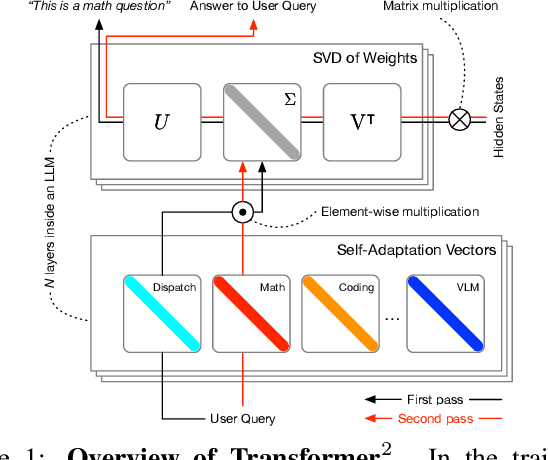

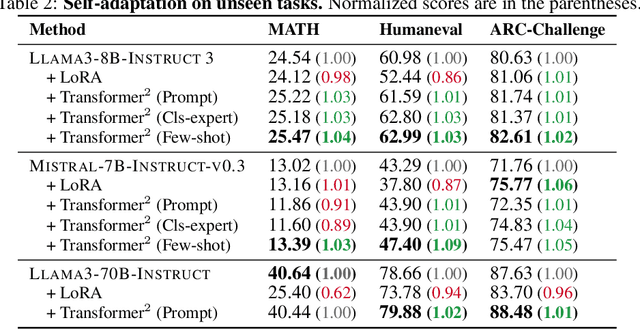
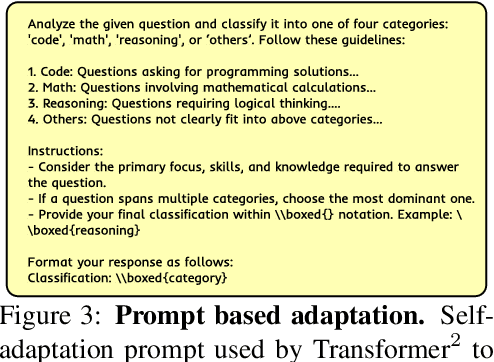
Abstract:Self-adaptive large language models (LLMs) aim to solve the challenges posed by traditional fine-tuning methods, which are often computationally intensive and static in their ability to handle diverse tasks. We introduce $\text{Transformer}^2$, a novel self-adaptation framework that adapts LLMs for unseen tasks in real-time by selectively adjusting only the singular components of their weight matrices. During inference, $\text{Transformer}^2$ employs a two-pass mechanism: first, a dispatch system identifies the task properties, and then task-specific "expert" vectors, trained using reinforcement learning, are dynamically mixed to obtain targeted behavior for the incoming prompt. Our method outperforms ubiquitous approaches such as LoRA, with fewer parameters and greater efficiency. $\text{Transformer}^2$ demonstrates versatility across different LLM architectures and modalities, including vision-language tasks. $\text{Transformer}^2$ represents a significant leap forward, offering a scalable, efficient solution for enhancing the adaptability and task-specific performance of LLMs, paving the way for truly dynamic, self-organizing AI systems.
Computer Vision-Driven Gesture Recognition: Toward Natural and Intuitive Human-Computer
Dec 24, 2024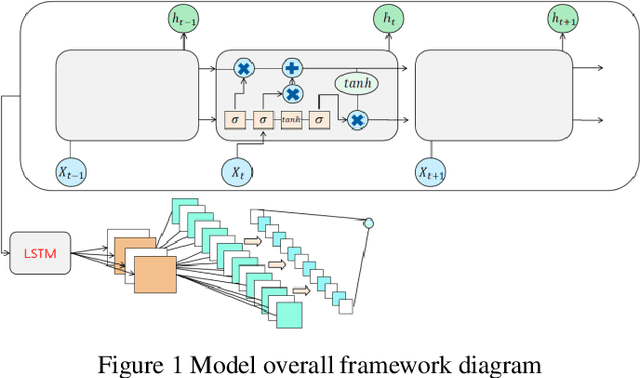
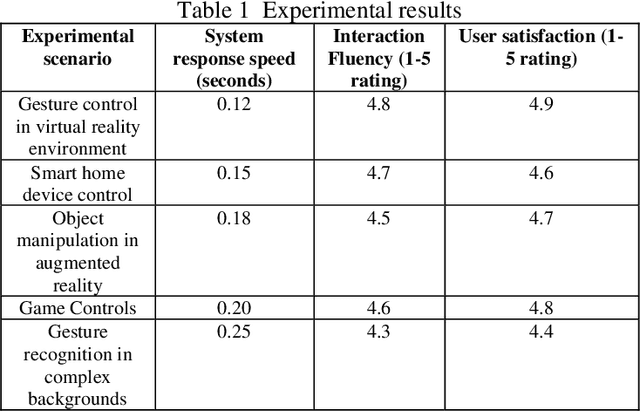
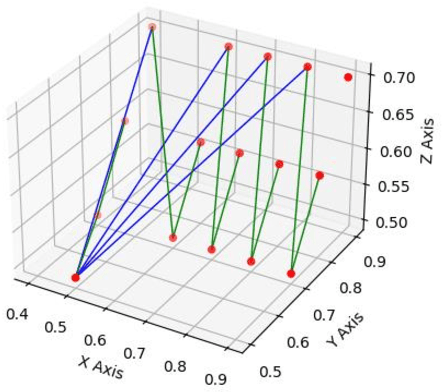
Abstract:This study mainly explores the application of natural gesture recognition based on computer vision in human-computer interaction, aiming to improve the fluency and naturalness of human-computer interaction through gesture recognition technology. In the fields of virtual reality, augmented reality and smart home, traditional input methods have gradually failed to meet the needs of users for interactive experience. As an intuitive and convenient interaction method, gestures have received more and more attention. This paper proposes a gesture recognition method based on a three-dimensional hand skeleton model. By simulating the three-dimensional spatial distribution of hand joints, a simplified hand skeleton structure is constructed. By connecting the palm and each finger joint, a dynamic and static gesture model of the hand is formed, which further improves the accuracy and efficiency of gesture recognition. Experimental results show that this method can effectively recognize various gestures and maintain high recognition accuracy and real-time response capabilities in different environments. In addition, combined with multimodal technologies such as eye tracking, the intelligence level of the gesture recognition system can be further improved, bringing a richer and more intuitive user experience. In the future, with the continuous development of computer vision, deep learning and multimodal interaction technology, natural interaction based on gestures will play an important role in a wider range of application scenarios and promote revolutionary progress in human-computer interaction.
Emma-X: An Embodied Multimodal Action Model with Grounded Chain of Thought and Look-ahead Spatial Reasoning
Dec 17, 2024Abstract:Traditional reinforcement learning-based robotic control methods are often task-specific and fail to generalize across diverse environments or unseen objects and instructions. Visual Language Models (VLMs) demonstrate strong scene understanding and planning capabilities but lack the ability to generate actionable policies tailored to specific robotic embodiments. To address this, Visual-Language-Action (VLA) models have emerged, yet they face challenges in long-horizon spatial reasoning and grounded task planning. In this work, we propose the Embodied Multimodal Action Model with Grounded Chain of Thought and Look-ahead Spatial Reasoning, Emma-X. Emma-X leverages our constructed hierarchical embodiment dataset based on BridgeV2, containing 60,000 robot manipulation trajectories auto-annotated with grounded task reasoning and spatial guidance. Additionally, we introduce a trajectory segmentation strategy based on gripper states and motion trajectories, which can help mitigate hallucination in grounding subtask reasoning generation. Experimental results demonstrate that Emma-X achieves superior performance over competitive baselines, particularly in real-world robotic tasks requiring spatial reasoning.
 Add to Chrome
Add to Chrome Add to Firefox
Add to Firefox Add to Edge
Add to Edge